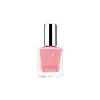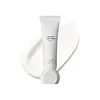What's inside
What's inside
 Key Ingredients
Key Ingredients

 Benefits
Benefits

 Concerns
Concerns

 Ingredients Side-by-side
Ingredients Side-by-side

Hydrogenated Poly(C6-14 Olefin)
EmollientHydrogenated Styrene/Isoprene Copolymer
Polyglyceryl-2 Triisostearate
EmulsifyingSynthetic Fluorphlogopite
Isododecane
EmollientCI 77891
Cosmetic ColorantHydrogenated Polyisobutene
EmollientTrimethylsiloxysilicate
EmollientCI 77491
Cosmetic Colorant1,2-Hexanediol
Skin ConditioningTriethoxycaprylylsilane
Phenoxyethanol
PreservativeCI 15850
Cosmetic ColorantAluminum Hydroxide
EmollientTocopherol
AntioxidantPentaerythrityl Tetra-Di-T-Butyl Hydroxyhydrocinnamate
AntioxidantPrunus Amygdalus Dulcis Oil
Skin ConditioningPrunus Armeniaca Kernel Oil
MaskingSimmondsia Chinensis Seed Oil
EmollientMangifera Indica Seed Oil
EmollientMica
Cosmetic ColorantHydrogenated Poly(C6-14 Olefin), Hydrogenated Styrene/Isoprene Copolymer, Polyglyceryl-2 Triisostearate, Synthetic Fluorphlogopite, Isododecane, CI 77891, Hydrogenated Polyisobutene, Trimethylsiloxysilicate, CI 77491, 1,2-Hexanediol, Triethoxycaprylylsilane, Phenoxyethanol, CI 15850, Aluminum Hydroxide, Tocopherol, Pentaerythrityl Tetra-Di-T-Butyl Hydroxyhydrocinnamate, Prunus Amygdalus Dulcis Oil, Prunus Armeniaca Kernel Oil, Simmondsia Chinensis Seed Oil, Mangifera Indica Seed Oil, Mica
Water
Skin ConditioningIsododecane
EmollientC13-15 Alkane
SolventNylon-12
Alcohol Denat.
AntimicrobialSilica
AbrasiveDimethicone
EmollientTrimethylsiloxysilicate
EmollientMica
Cosmetic ColorantPentylene Glycol
Skin ConditioningButylene Glycol
HumectantGlycerin
HumectantIsononyl Isononanoate
EmollientNiacinamide
SmoothingCetyl PEG/PPG-10/1 Dimethicone
EmulsifyingTitanium Dioxide
Cosmetic ColorantPolyglyceryl-4 Isostearate
EmulsifyingDimethicone/Vinyl Dimethicone Crosspolymer
Skin ConditioningSalix Nigra Bark Extract
Skin ProtectingCentella Asiatica Leaf Extract
Skin ConditioningCentella Asiatica Extract
CleansingMagnesium Sulfate
Disteardimonium Hectorite
StabilisingPEG-10 Dimethicone
Skin ConditioningTriethoxycaprylylsilane
Vinyl Dimethicone/Methicone Silsesquioxane Crosspolymer
Aluminum Hydroxide
EmollientAdenosine
Skin ConditioningTrisodium Ethylenediamine Disuccinate
Ectoin
Skin ConditioningMadecassoside
AntioxidantAsiaticoside
AntioxidantMadecassic Acid
Skin ConditioningAsiatic Acid
Skin ConditioningWater, Isododecane, C13-15 Alkane, Nylon-12, Alcohol Denat., Silica, Dimethicone, Trimethylsiloxysilicate, Mica, Pentylene Glycol, Butylene Glycol, Glycerin, Isononyl Isononanoate, Niacinamide, Cetyl PEG/PPG-10/1 Dimethicone, Titanium Dioxide, Polyglyceryl-4 Isostearate, Dimethicone/Vinyl Dimethicone Crosspolymer, Salix Nigra Bark Extract, Centella Asiatica Leaf Extract, Centella Asiatica Extract, Magnesium Sulfate, Disteardimonium Hectorite, PEG-10 Dimethicone, Triethoxycaprylylsilane, Vinyl Dimethicone/Methicone Silsesquioxane Crosspolymer, Aluminum Hydroxide, Adenosine, Trisodium Ethylenediamine Disuccinate, Ectoin, Madecassoside, Asiaticoside, Madecassic Acid, Asiatic Acid
Ingredients Explained
These ingredients are found in both products.
Ingredients higher up in an ingredient list are typically present in a larger amount.
Aluminum Hydroxide is a form of aluminum. It can be naturally found in nature as the mineral gibbsite. In cosmetics, Aluminum Hydroxide is used as a colorant, pH adjuster, and absorbent.
As a colorant, Aluminum Hydroxide may add opacity, or reduce the transparency. Aluminum hydroxide is contains both basic and acidic properties.
According to manufacturers, this ingredient is an emollient and humectant. This means it helps hydrate the skin.
In medicine, this ingredient is used to help relieve heartburn and help heal ulcers.
There is currently no credible scientific evidence linking aluminum hydroxide in cosmetics to increased cancer risk.
Major health organizations allow the use of aluminum hydroxide in personal care products and have not flagged it as a carcinogenic risk at typical usage levels.
Learn more about Aluminum HydroxideIsododecane is a fragrance, emollient, and solvent.
As an emollient, it helps your skin stay soft and hydrated. Emollients help trap moisture into your skin.
Isododecane's role as a solvent makes it a great texture enhancer. It spreads smoothly on skin and does not leave a sticky feeling behind. Isododecane also helps prevent color transfer in makeup products.
Isododecane is not absorbed into skin.
Learn more about IsododecaneMica is a naturally occurring mineral used to add shimmer and color in cosmetics. It can also help improve the texture of a product or give it an opaque, white/silver color.
Serecite is the name for very fine but ragged grains of mica.
This ingredient is often coated with metal oxides like titanium dioxide. Trace amounts of heavy metals may be found in mica, but these metals are not harmful in our personal products.
Mica has been used since prehistoric times throughout the world. Ancient Egyptian, Indian, Greek, Roman, Aztec, and Chinese civilizations have used mica.
Learn more about MicaTriethoxycaprylylsilane is a silicone used to bind and stabilize ingredients.
As an emulsifier, it helps prevent ingredients from separating. This can help elongate the shelf life of products.
Triethoxycaprylylsilane is often used to coat mineral sunscreens ingredients to help give a better feel. It also helps reduce oxidative stress in sunscreens.
Learn more about TriethoxycaprylylsilaneThis silicone is an emollient. Emollients create a thin film on the skin to prevent moisture from escaping.
It is not soluble in water and helps increase water-resistance in products.
According to a manufacturer, it can blend seamlessly with silicone oils, such as Cyclopentasiloxane.
Learn more about Trimethylsiloxysilicate